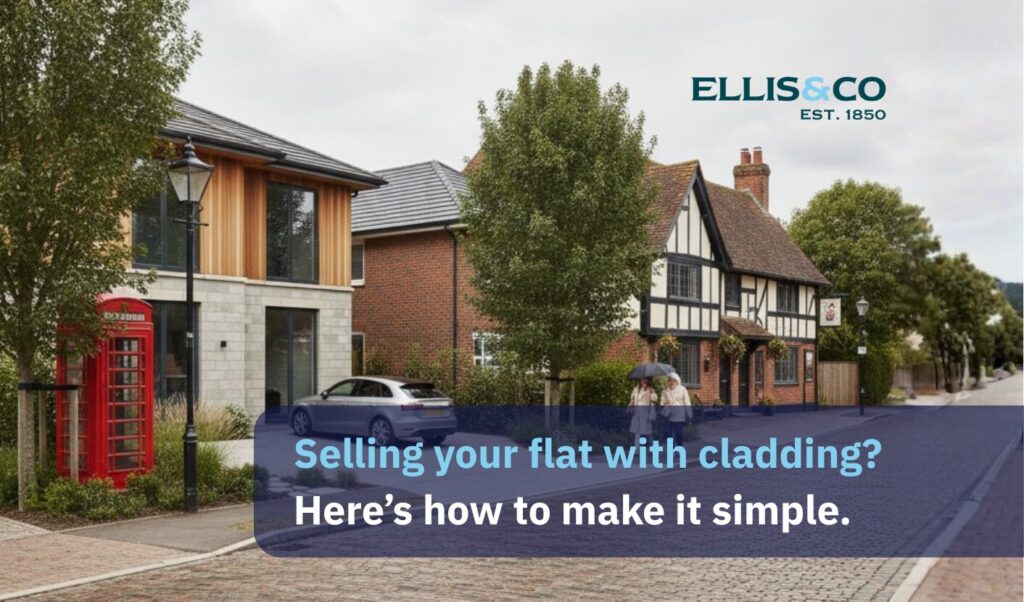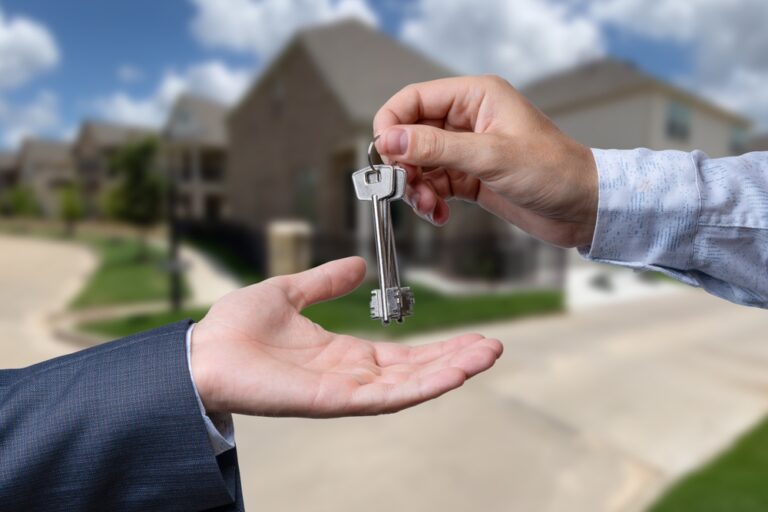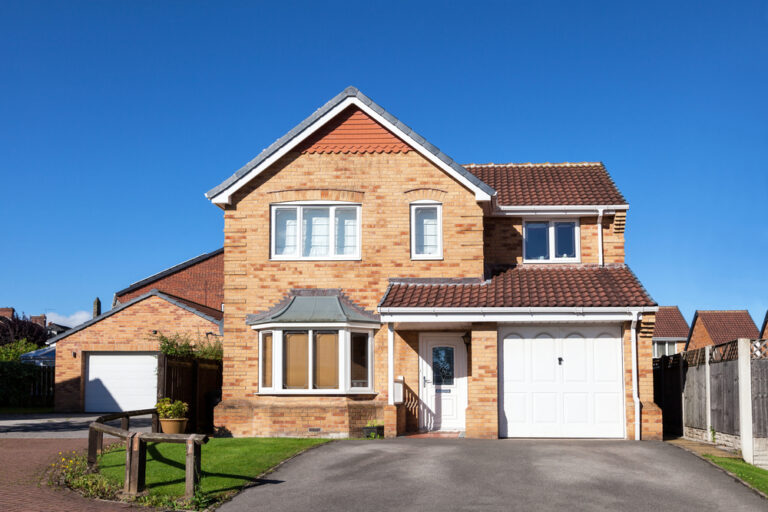If you’re thinking of selling your flat with cladding, you may already be worrying about how this will affect your chances. Since the Grenfell Tower tragedy in 2017, cladding has become a subject that sellers, buyers and mortgage lenders can’t ignore.
The reality is that selling a flat with cladding isn’t impossible, but it can be more complicated. The key is understanding the issues, knowing where you stand, and making sure buyers have the information they need.
This guide answers the most common questions sellers have, from understanding what cladding is to whether it’s possible to sell without an EWS1 form, so you can move forward with clarity and confidence.
Related: What do leaseholders need to know about cladding?
What exactly is cladding?
Cladding is the material attached to the outside of a building. It’s there for protection, insulation and appearance. Some of the most common types include timber, uPVC, metal panels, brick and stones, and high-pressure laminates.
On houses, cladding may just cover small areas. On blocks of flats, it’s often much more extensive, which is why questions about safety and mortgage lending usually arise.
If you’re unsure whether your block has cladding, your managing agent or freeholder should be able to confirm.
Why is cladding dangerous?
Cladding itself isn’t automatically unsafe. The concern is about whether the materials used are combustible and how they’ve been installed. Without proper fire breaks, fire can spread quickly up the building.
The Grenfell Tower disaster highlighted the risks of aluminium composite material (ACM) cladding. In response, government guidance and lender requirements have evolved, leading to inspections of thousands of buildings across the UK, many of which have required expensive remediation.
This is what’s often referred to as the cladding crisis.
Will cladding affect my ability to sell my property?
Not necessarily. Flats with cladding are sold every day. The main issue isn’t the cladding itself, but whether your building has been properly assessed and whether that assessment is available to potential buyers.
If the position is unclear, some buyers may be reluctant to proceed, and many mortgage lenders will hold back until they see formal evidence of safety. Without it, the pool of buyers is usually limited to cash purchasers, which affects price and time on the market.
That said, once the paperwork is clear and available, sales often go through smoothly.
Related: How to sell a fixer upper house?
What is an EWS1 Certificate, and when is it required?
The EWS1 form (short for External Wall System certificate) was introduced to give lenders confidence about a building’s fire safety. It confirms whether the cladding and external wall system have been checked by a qualified professional.
Based on the assessment, a building is assigned one of the following ratings:
Option A – External wall materials are unlikely to support combustion:
- A1 – No cladding containing significant combustible materials is present.
- A2 – Cladding is present, but a risk assessment has confirmed that no remedial action is needed.
- A3 – While the wall system is deemed low-risk overall, certain attachments (e.g. balconies or decorative elements) may present some concern. However, no remedial work is required.
Option B – Combustible materials are present in the cladding system:
- B1 – There are combustible materials, but the fire risk is considered low enough that remedial work is not required at this time.
- B2 – The level of fire risk is high enough that remediation is necessary before the building can be considered safe.
Originally, the EWS1 was only meant for buildings above 18 metres in height. In practice, however, many lenders now ask for it on shorter buildings too if cladding is present.
Does my building need an EWS1 form?
This depends on:
- The height of the block
- The type of cladding used
- The stance taken by the buyer’s lender
Some lenders may agree to lend without one on smaller buildings, but others will insist. If you don’t know whether an EWS1 form exists for your block, your managing agent or freeholder is your first point of contact.
Can I sell with a B2 rating?
A B2 rating means remedial work is required. Mortgage lenders are often unwilling to proceed until this work is either completed or fully funded. That can make a sale slower and more challenging.
But it doesn’t make it impossible. You could:
- Sell to a cash buyer
- Wait for confirmation of funding, such as from the Building Safety Fund
- Adjust your asking price to reflect the circumstances
Can I sell without an EWS1 certificate?
In some cases, yes. If your building is under 18 metres and the lender doesn’t request one, you may not need it. But without a certificate, you’ll usually face a smaller market. Many buyers are understandably cautious when clear paperwork is missing.
What type of cladding is unsafe?
Some types of cladding are considered high-risk. The most notable examples are:
- Aluminium composite material (ACM)
- Certain high-pressure laminates (HPL)
- Timber cladding, depending on installation
The presence of these materials doesn’t automatically make your home unsellable, but it will usually trigger a need for professional assessment.
How do I know if my flat has cladding?
If you can’t tell by looking, your managing agent or freeholder should have records of the construction materials. They’ll also be able to confirm whether an assessment has been carried out. If you’re worried, asking in writing will give you something to pass on to your estate agent and buyers.
What can I do to improve my chances of selling?
You’ll give yourself the best chance of a smooth sale if you:
- Check the status early – find out whether your building has been assessed and whether an EWS1 exists.
- Understand the rating – if your block has an EWS1, know what the rating means and be ready to explain it.
- Keep everything transparent – buyers want reassurance. Supplying certificates and reports upfront builds trust.
- Choose the right agent – not all agents have experience with cladding issues. Pick one who knows how to manage lender queries and market flats in this situation.
Related: When is the best time to sell your home?
Selling with Ellis & Co
The cladding crisis has undoubtedly made selling a flat more challenging than before. However, challenging doesn’t mean unachievable. With the right preparation and guidance, a successful sale is still well within reach.
At Ellis & Co, we’ve been helping Londoners move for decades. We understand the challenges that come with selling a flat with cladding and how to navigate them. From gathering the right paperwork to presenting your property in the best light, our experienced local estate agents are here to guide you every step of the way.
Start with a free market valuation today!







